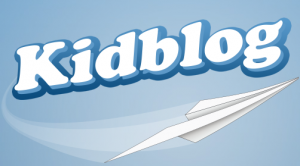Download full Word version with images: Reasons why Chinese migrants moved to Australia
Goal:
Students will individually and collaboratively engage in the unit of work by designing a series of thumbnail sketches that illustrates a Chinese migrants journey to Australia. Students will sketch multiple images from making inferences on related pieces of information.
Learning Area(s):
- History
- Design and Technologies knowledge and understanding
Learning Experience focus:
Reasons why people from Europe and Asia migrated to Australia – Australian Curriculum History, 2013
Content Descriptor:
6.2 Identify and explain properties and characteristics of a range of technologies, materials, systems, tools and equipment and evaluate the impact of their use locally, regionally and globally – Australian Curriculum of Technologies, 2013
Cross-Curriculum Opportunities:
- Asia and Australia’s engagement with Asia
- Sustainability
Resources:
- IWB
- A4 colored cardboard
- Images of different nationalities
- Colored pencils
- S&E books
Key questions:
- What nationality is this?
- Where do they live?
- How do you think these nationalities contribute to Australia?
- What are the characteristics of both the Chinatown/Australian town?
- Are there any similarities?
- What is a journey?
Introduction:
- Introduce unit of work reasons why people from Europe and Asia migrated to Australia
- Gain students interest by displaying different nationalities images
- Further elaborating on images by engaging in THINK, PAIR, SHARE supports students critiquing, exploring and investigating needs and opportunities
- After THINK, PAIR, SHARE further elaborate on experiences relating to students own personal experiences
Key questions:
How do you think these nationalities contribute to Australia?
Where do they live?
How do you think these nationalities contribute to Australia?
Body:
- Introduce concept of Thumbnail Sketches
- Displaying example of previous thumbnail sketches, engage in class discussion about concept
- Linking task to learning focus Reasons why people from Europe and Asia migrated to Australia – Australian Curriculum History, 2013 – display Chinatown buildings images
- Show Chinatown buildings side-by-side with Australian towns
- Students viewing buildings side by side provides visual aid assistance
- Engage in class discussion about characteristics and/or similarities between the two countries townhouses
- Class discussion continues about the reasoning of Chinese migrants making the journey to Australia – main focus using the 5W’s model to elaborate on discussion
- After the discussion link focus from 5W’s model and link towards thumbnail sketches
- Emphasising concept of journey by organising students into pairs to discuss definition of word ‘journey’
- Students begin doing rough draft of thumbnails – the concept of sequential ordering from thumbnail of sketches
Conclusion:
- Any thumbnail sketches done ahead must be acknowledged and praised
- Evaluating should be demonstrated on board for students to understood into text book students are writing on


